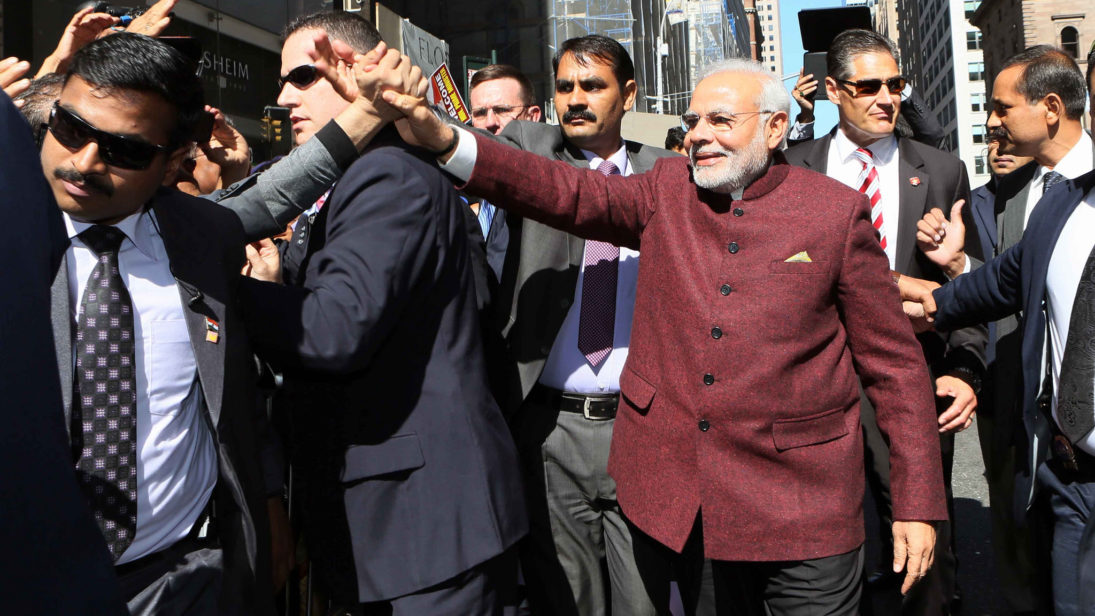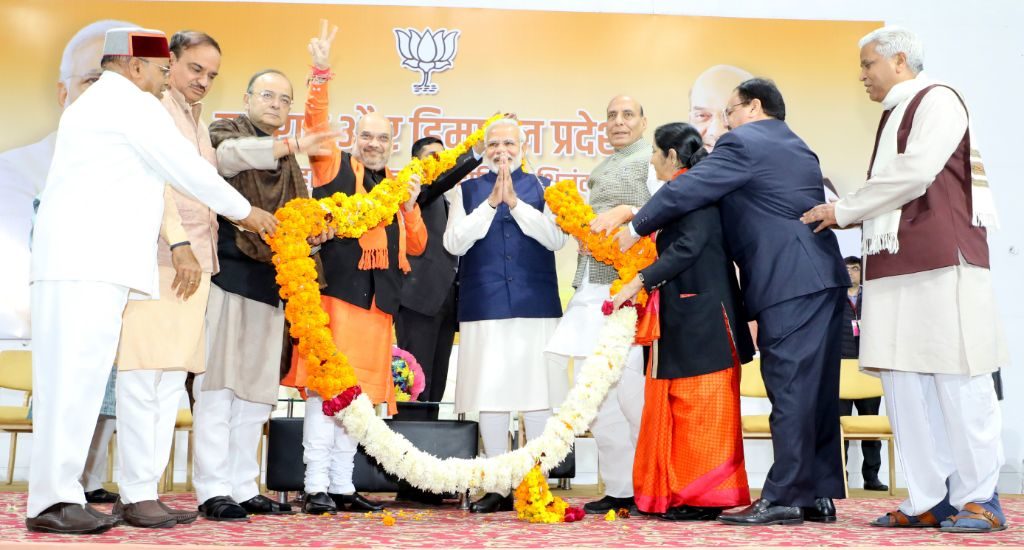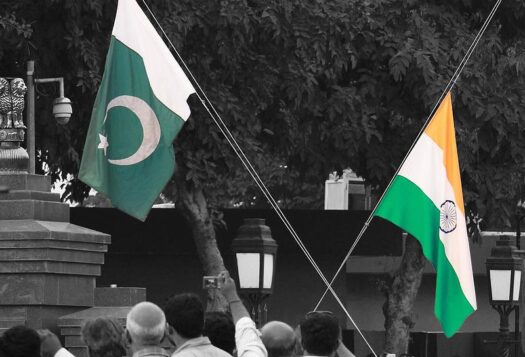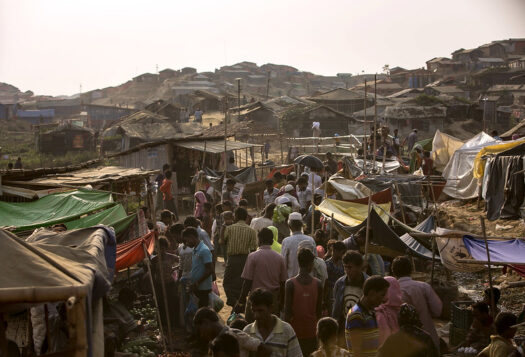
Whether one lauds or condemns the specifics of India’s foreign policy orientation under the premiership of Narendra Modi, one can hardly ignore his efforts to engage leaders of all hues to spread India’s diplomatic and economic wings far and wide. While the broad contours of India’s foreign policy have seen more continuity than change in his tenure, Modi’s political showmanship and bravado seem to lend a sense of urgency to India’s goal of establishing its place in the world. However, as the 2019 general elections loom large on Indian minds, doubts are being raised about Modi’s popularity with the Indian electorate and there is debate about expected shifts in Indian foreign policy if he doesn’t retain power. However, from the National Democratic Alliance (NDA)-I under the leadership of Prime Minister Atal Bihari Vajpayee through the United Progressive Alliance (UPA) I and II with Prime Minister Manmohan Singh at the helm to the current NDA-II with Prime Minister Modi steering the wheel, India’s foreign policy has been defined by the same overarching objective to build and sustain ties with all major powers, with an eye to fulfilling India’s aspirations of becoming a power of global consequence. As such, the outcome of the elections next year and the political fortunes of Prime Minister Modi are not likely to have much consequential impact on India’s foreign policy choices.
A Foreign Policy Consensus
Earlier this year, Indian strategic analyst C. Rajamohan wrote: “Successive governments in Delhi since the end of the Cold War have managed to construct and nurture a measure of foreign policy consensus and nudge India along a pragmatic international trajectory.” To a large extent, Modi’s foreign policy has traveled a well-known route—in an interdependent, multipolar world, New Delhi’s foreign policy has been defined by a sense of pragmatism, without any rigid ideological moorings. Such an approach to foreign policy is meant to execute the quintessential objective of securing India’s economic, diplomatic, and security interests, while lowering undesired consequences. And for the last two decades or so, successive administrations in New Delhi have, despite rhetorical flourishes to the contrary, carried forward essentially the same foreign policy. And some of the mainstays of this policy have been maintaining a balance of relations in West Asia among Iran, Israel, and Saudi Arabia; playing great power politics with the United States, Russia, and China; reaching out to African countries as a development partner and taking forward its multi-faceted relationship with the Association of Southeast Asian Nations (ASEAN).
In an interdependent, multipolar world, New Delhi’s foreign policy has been defined by a sense of pragmatism, without any rigid ideological moorings. Such an approach to foreign policy is meant to execute the quintessential objective of securing India’s economic, diplomatic, and security interests, while lowering undesired consequences. And for the last two decades or so, successive administrations in New Delhi have, despite rhetorical flourishes to the contrary, carried forward essentially the same foreign policy.
When India-China relations seemed to be nosediving during the Doklam standoff last summer, quick diplomatic breakthroughs just prior to the BRICS Xiamen Summit in late 2017 and the informal summit between Prime Minister Modi and President Xi Jinping in Wuhan in April of this year managed to lift the relationship out of a crisis. From there, the two countries began to repair their relationship by envisioning small-scale, tactical cooperative projects such as jointly training Afghan diplomats while continuing to talk about ways to resolve their border dispute. This was essentially a return to the modus vivendi between India and China that has existed since the early 1990s. Even India’s careful balancing this year of its emerging partnership with the United States while maintaining ties with its traditional defense partner Russia is a continuation of the dynamic that has existed since the Indo-U.S. civilian nuclear deal. Even as India signed the landmark nuclear deal with the United States in 2008, cooperation with Russia in the realm of civil nuclear energy moved ahead simultaneously. Similarly, in the recent past, while the volume of defense imports from the United States has substantially increased in the last decade, New Delhi has made it quite apparent that Moscow will remain its primary defense partner. Recently, New Delhi’s dilemma was seen most plainly in its decision to buy Russian-made S-400 Triumf missile defense system amidst threat of U.S. sanctions under the Countering America’s Adversaries through Sanctions Act(CAATSA).
Of late, “Indo-Pacific” has been the buzzword in international politics and India’s significant Indo-Pacific tilt was evident in Modi’s speech at the Shangri La Dialogue this year. A key aspect of this strategy is the centrality of ASEAN. But this too is a legacy policy, since from the Narasimha Rao era Look East Policy through to the Modi-era Act East Policy, New Delhi has always accorded primacy to its relationship with ASEAN as the institution representing the interest of Southeast Asia. Another focus of India’s Indo-Pacific strategy is cooperation through the Quad, comprising the United States, Japan, and Australia. These are all countries with which India has been strengthening ties since at least the last 10 to 15 years, though Modi’s approach has been more sure-footed, with an eye on a rising China. Even the formation of the Japan-United States-India trilateral partnership or “JAI” at the highest level of leadership, as seen in Modi’s recent meeting with U.S.President Donald Trump and Japanese Prime Minister Shinzo Abe, has been a logical extension of the trilateral dialogue that has existed since 2011, starting at the director/assistant secretary level.
Something that the Modi government has done differently is revitalizing multilateral organisations like the Bay of Bengal Initiative for Multi-Sectoral Technical and Economic Cooperation (BIMSTEC) and using it to augment India’s role in terms of connecting its immediate neighborhood to its extended neighborhood and creating a more integrated economic space in the region. The Modi government has also taken forward multinational connectivity projects like the International North South Transportation Corridor, of which it is a founding member and signed the original agreement in 2002. Re-energizing INSTC indicates India’s intention to reach out to continental Eurasia despite the tilt towards maritime Indo-Pacific in recent times. This is a welcome move since China’s ambitious Belt and Road Initiative (BRI) covers both the maritime Indo-Pacific and continental Eurasia.

For any government in New Delhi, it is almost a default foreign policy initiative to have a “neighborhood first” policy. However, how to protect and promote India’s interests in its strategic backyard, without coming across as interfering in the internal affairs of its neighboring countries, will most likely remain a policy headache, regardless of who is at the helm of affairs post the 2019 elections.
Continuing Challenges
The extent to which Modi’s diplomatic flair has translated into concrete wins for India, for instance in terms of India’s immediate neighborhood, remains a matter of debate. In the face of China’s increasing forays into South Asia through ports and other infrastructure developments and investments, New Delhi has often found itself behind the curve. Despite India often pejoratively being called a “big brother” among its immediate neighbors because of its overbearing presence both geographically and in terms of material capabilities, India’s ability to affect outcomes favorable to its interests in the region has often been found wanting. Yet again, New Delhi’s dilemma in dealing with its immediate neighborhood has been some sort of a perennial, and not a Modi era phenomenon. For any government in New Delhi, it is almost a default foreign policy initiative to have a “neighborhood first” policy. However, how to protect and promote India’s interests in its strategic backyard, without coming across as interfering in the internal affairs of its neighboring countries, will most likely remain a policy headache, regardless of who is at the helm of affairs post the 2019 elections.
India in 2019: More of the Same
In a democratic country like India, where building consensus towards any change is a Herculean task, foreign policy course will hardly change drastically except in the mode of operations and the optics associated with the leaders at the helm. Irrespective of who wins, and how big, in 2019, the core priorities of India’s foreign policy and the need to balance relations with a multitude of actors across the spectrum, are bound to remain unchanged.
Whether it is building a strategic partnership with the United States, maintaining economic ties with China while deterring its unilateral aggression, sustaining the defense relationship with Russia despite a strategic deficit, or securing India’s pivotal position in a number of multilateral organisations like G20 or BRICS, New Delhi has been projecting a consensus. The two main political parties, the Indian National Congress and the Bharatiya Janata Party(BJP), particularly during the election season, might engage in sound bites domestically to lay claim to foreign policy legacies and blame the other side for faux pas and follies. However, in substance, there is no BJP or Congress foreign policy, there is only Indian foreign policy.
Editor’s Note: As 2018 winds down, SAV contributors from India, Pakistan, Afghanistan, Bangladesh, Nepal, and Sri Lanka look back at the year gone by, reflecting on significant political and economic developments in the subcontinent and assessing what these events may foretell about 2019. Read the series here.
***
Image 1: MEA Photo Gallery via Flickr Images
Image 2: Bharatiya Janata Party website


